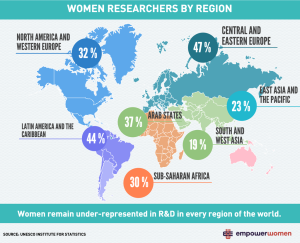
Science & Tech
UN declares International Day of Women in Science
From Roberta Bondar to Harriet Brooks, Canada has more than its fair share of women scientists to be proud of. However women are still a minority in the STEM fields
- 472 words
- 2 minutes
This article is over 5 years old and may contain outdated information.
Science & Tech

New research could help extend the life of glass windows, cups and juice bottles.
Researchers at McGill University believe they’ve discovered how to keep glass from breaking. The answer lies with seashells. Microscopic patterns in mother of pearl make the glass pliable and able to withstand strong impact. These patterns, when etched into glass slides, result in glass which bends or dents, but doesn’t break on impact.
“These micro-cracks work by guiding larger cracks and, in that process, absorb the energy of the impact,” says Francois Barthelat, an associate professor at McGill University’s department of mechanical engineering. “The main source of failure from glass is from impact. So this new method is extending the life of glass.”
Barthelat says that while this new method of making glass looks promising, it’s too early to tell the potential outcomes.
However, depending on what the glass is made of, this method could cause problems in recycling, especially if the new glass is treated with polyurethane.
“My primary concern would be if there’s an additive to the glass that might change its chemistry,” says Laurie Borg, president of recycling company NexCycle Canada. “If polyurethanes go through a glass cycle, they don’t break down.”
Borg says the malleable glass could even change recycling methods, but it’s still too early to tell. “I’d have to work out to what degree the glass is unbreakable,” she says. “You want to be able to crunch the bottle in a manner that loosens the labels.”
Barthelat says the glass doesn’t need the added coating and they could skip this final stage.
Are you passionate about Canadian geography?
You can support Canadian Geographic in 3 ways:

Science & Tech
From Roberta Bondar to Harriet Brooks, Canada has more than its fair share of women scientists to be proud of. However women are still a minority in the STEM fields

Science & Tech
As geotracking technology on our smartphones becomes ever more sophisticated, we’re just beginning to grasps its capabilities (and possible pitfalls)

Science & Tech
Environmental entrepreneur Miranda Wang turns to science to seek profitable solutions to the problem of what to do with our mountains of plastic waste

Environment
Carbon capture is big business, but its challenges fly in the face of the need to lower emissions. Can we square the circle on this technological Wild West?